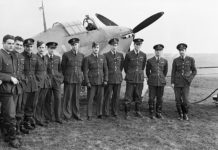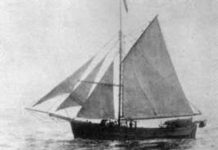Established in 1670 as the ‘Governor and Company of Adventurers of England Trading into Hudson’s Bay’, the Hudson’s Bay Company (HBC) constructed small fur trading posts south of the bay.
York Factory of Hudson’s Bay Company
Serving as a trading post from 1684, York Factory on the Hayes River was the administrative centre for a network of posts established throughout western Rupert’s Land (Canada) and beyond. Captured and lost by the French several times, the fort was returned to English control at the signing of the Treaty of Utrecht in 1713, and the company was awarded exclusive trading rights on the bay.
While the majority of the fur traders were from the Orkneys in Scotland, some were from Ireland, Norway, and Canada and all were accustomed to bleak northern winters. Hardy souls, they fought against the elements in order to survive and fulfill their contracts. The men who spent their winters alone at small outposts sometimes broke the extreme loneliness by travelling in the bitterly cold weather at Christmas time to York Factory to enjoy the camaraderie and good meals.
Christmas Dinner at York Factory
The well-planned day consisted of a partridge (Arctic Ptarmigan) hunt to begin after a breakfast of fried fish, if the weather was clear. At five o’clock, a substantial Christmas dinner was served on a large table in the well-lit, winter mess-room. As noted by HBC Clerk Robert Michael Ballantyne, the dinner menu for Christmas Day in 1841 included a fat, plump wild goose, huge roast of beef (which may have been ox), twelve white partridges, and a large piece of salt pork. It is probable that potatoes grown at the fort and traditional mince pies were on the menu that year as they were in 1838. Ballantyne completed his description of the Christmas feast with, “the greatest rarities on the board were two large decanters of port wine and two smaller ones of Madeira”.
Conversations during dinner included minor jokes and much laughter which increased as the men imbibed. A toast to lost and absent loved ones and friends was followed by an almost unbearable silence as each man’s mind returned to the past and to far-away homes. Then, with a toast ‘to the ladies’ the men were lifted out of their melancholia, and at the first sounds of fiddle music in the Bachelors’ Hall, they left the table and joined the party.
Dancing to Fiddle Music in Bachelors’ Hall
All men at the fort, and all local Native people (probably about 20) living within a thirty-mile radius of York Factory were invited to the evening’s ball in the Bachelors’ Hall.
According to Ballantyne, the stove was moved from the centre of the floor to a side wall to provide room for dancers. In the hall lighted by tallow candles held in metal wall sconces, the dancing started up as soon as a young Native man took up his fiddle and put bow to string. Scottish reels were most popular, and the fiddler hardly had a moment’s rest. Toward the evening’s end, venison, bread, and a great kettle of tea were placed out for the enjoyment of all revellers.
Fur Traders’ Respite Christmas to New Year’s Day
During their Christmas to New Year’s Day respite, fur traders, especially those who lived and worked alone in the wilderness, socialized, enjoyed decent meals, contemplated their futures, and reminisced about their families. On New Year’s Eve, each man whose contract was renewed received a celebratory “Engagement Pint” of brandy. A day later, the fur traders returned to their work at York Factory or one of the Hudson’s Bay Company outposts.
Source:
- Hudson’s Bay: or, Every-day Life in the Wilds of North America by Robert Michael Ballantyne, Publishers Phillips, Sampson & Co. 1859






